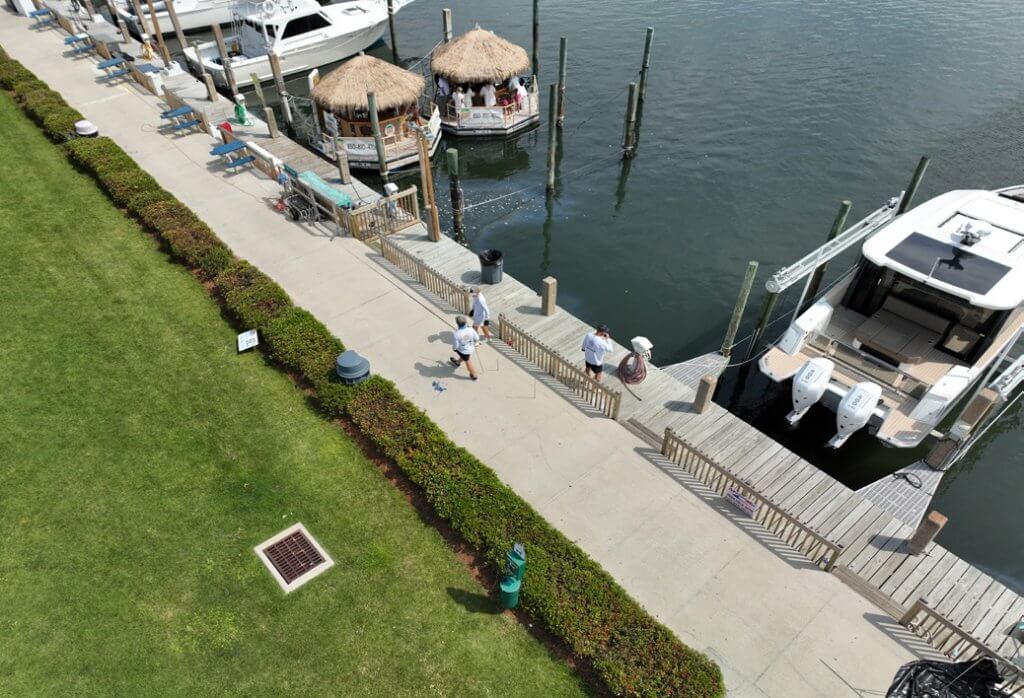Treasure Island Marina Seawall Stabilization

Treasure Island Marina contacted Panhandle Seawall & Infrastructure in early 2024 to address severe erosion behind 600 feet of seawall. Soil loss had destabilized the structure, causing adjacent concrete sidewalks to settle and create trip hazards for customers. The marina required a solution that would stabilize the seawall, eliminate safety risks, and avoid disruptions to daily operations.
Initial Assessment
Inspections revealed minor deflection in the seawall panels, which were structurally sound overall. However, soil probing identified significant voids and eroded areas behind the wall. A previous repair attempt using concrete pressure grouting had worsened the issue; cementitious material added excessive weight to the seawall and adhered to the underside of sidewalk sections, exacerbating settlement. The primary challenges included large voids beneath the sidewalk and ongoing hydrostatic pressure imbalances.
Proposed Solution
The repair plan combined three strategies to address both immediate and long-term concerns. First, SW-RP1, a single-component polyurethane grout, was injected to seal the base of the seawall panels, bonding remaining soil to the structure and preventing future erosion. Second, AP Lift 430, a two-component structural polyurethane foam, was injected to fill large voids under the sidewalk and gently re-level the settled sections. Finally, permeable pressure control filters were installed in the middle of each panel to equalize hydrostatic pressure, reducing soil migration.
Procedures
SW-RP1 Application
- Injection points were drilled 1 foot behind the seawall, extending 1 foot below the mudline.
- Material was injected every 4 feet along the wall behind each joint, using approximately 1 gallon per vertical foot.
- Overcame challenges from existing concrete grout by drilling 40-inch holes to reach native soil.
AP 430 Void Filling
- An injection grid was established at 4-foot intervals through the sidewalk.
- Controlled volume injections prioritized void filling before precise lifting with dial indicators.
Pressure Control Filters
- Filters were installed between injection points from the water side to manage hydrostatic pressure.
Results and Conclusions
The first 300-foot phase, completed in May 2025, stabilized the seawall, eliminated trip hazards, and maintained marina operations throughout repairs. SW-RP1 created a waterproof bond between the wall and soil, while AP Lift 430 lifted settled sidewalks by filling voids. The procedure saved an estimated 70-80%, representing over $150,000 in savings for the marina (this does not include the opportunity costs of having the marina temporarily shut down). Post-repair inspections confirmed no further soil migration or settlement, and plans to continue the remaining 300 ft are underway.
